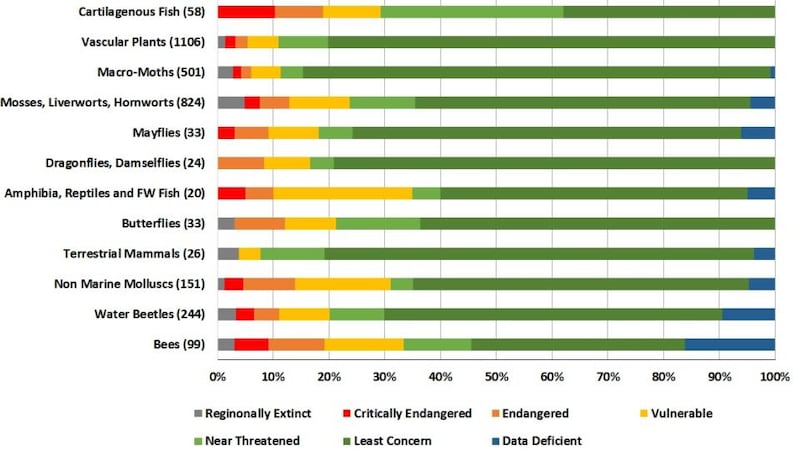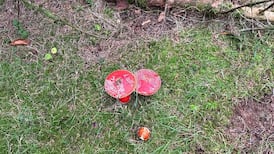Ireland's experience of species coming under threat of extinction has been broadly in line with trends around the world, an Irish expert on biodiversity has said following the publication of a damning World Wildlife Fund (WWF) report.
The global study showed 60 per cent of mammals, birds, fish and reptiles have been eradicated since 1970, leading to fears about the ramifications for society.
Dr Liam Lysaght, director of Ireland's National Biodiversity Data Centre, said while many species continue to be vulnerable in Ireland, the pattern can be reversed given the proper commitment.
"Generally speaking the international trends that have been described in that [WWF report] are reflected within Ireland as well," he told The Irish Times. "We are not immune to it; there have been similar declines here."
The report found the planetary change at hand is due to “exploding human consumption” and its effects on the environment.
“Red lists”, which are the international standard on species measurement, have been undertaken in Ireland on 12 groups, about one-tenth of the approximate 34,000 species (not including birds which have been compiled separately). All of them have some proportion that are under threat of extinction.
For example, about one-third of the 99 species of bees in Ireland are now either regionally extinct or vulnerable. Levels are high too for species of cartilaginous fish, reptiles, freshwater fish and non-marine molluscs, among others.
“We are trying to build an evidence base here. People say you never see the cuckoo anymore but that is all anecdotal,” said Dr Lysaght, of the constant efforts to improve our understanding of the toll modern life takes on nature.
Roseate tern
However, experts say it is not too late to change, no matter how bleak a picture the WWF report paints. Success stories have been found, notably with the Roseate tern, a bird species whose declining numbers have been studied and arrested.
“There is always a need for more political will for initiatives,” said Dr Lysaght who supports the idea of a national office to oversee conservation. “Biodiversity in the last couple of decades is not seen as a critical part of public policy.”

Oonagh Duggan, assistant head of policy and advocacy at BirdWatch Ireland agrees that overall patterns here mirror those abroad but said we do not have the statistical data to fully understand where we are.
She added that 92 per cent of the country’s habitats, deemed important by international standards, have bad or inadequate ecological status and “this does not bode well for the species and ecosystems” supported by them.
Of 185 species assessed for its “Birds of Conservation Concern in Ireland” list in 2014, 37 were placed on the red list, relating to those under threat of extinction, and 90 on the “amber list” where there are concerns. The number of red-listed species has increased by 12 since the review in 2007.
Policy change
Changes to ways of life all contribute; Ms Duggan points to pollution, climate change and other human factors.
“We have seen significant declines in farmland birds in particular and that would be due to the intensification of agriculture and land use change,” she said, giving as an example the once “ubiquitous” Curlew bird, now drastically reduced in number.
“We have a lot of laws to protect biodiversity in Ireland but mostly we are very concerned about how these laws are being implemented. They are not being enforced.”
While there are efforts to find solutions – the Bride Project in East Cork promotes conservation in farming – economic and environmental policy change is considered a key requirement. "Otherwise we are going to liquidate our planet," Ms Duggan said.









